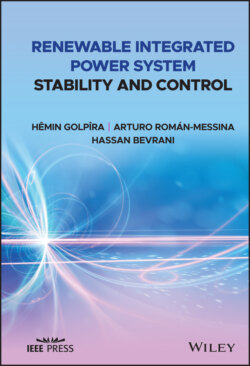Читать книгу Renewable Integrated Power System Stability and Control - Hassan Bevrani - Страница 17
1.2 Current State of Power System Stability and Control
ОглавлениеPower system stability and control can take different forms, which are influenced by the type of instability phenomena. A survey on the basics of power system controls, literature, and achievements is given in [6, 7].
PMUs are sophisticated digital recording devices that communicate global positioning system (GPS) synchronized high sampling rate dynamic power system's data to the central control and monitoring stations. The recorded data by PMUs provide valuable information about the dynamic of the power system that can be used for data‐driven modeling. An overview of system identification techniques for modeling of power systems using PMU data is given in [8]. In [9], a subspace identification method is used to identify a reduced order model for power oscillation control. The PMU data are used for the calibration of the parameters of the reduced‐order model of a power generator in [10]. The feasibility of multi‐input multi‐output (MIMO) identification of power systems using low‐level probing signal is shown in [11]. An online algorithm is used in [12] to identify the frequency response of power system dynamics, while it is combined with a selective modal analysis. The transfer function and state‐space model identifications using PMU data are compared in [13] for electromechanical oscillation damping estimation. Several identification methods are compared for analysis of inter‐area oscillatory modes of power systems [14].
Figure 1.1 Conceptual structure of a virtual synchronous generator.
The data from PMUs have already been used for estimation of some important power system parameters. The electromechanical modes of a power system and their confidence intervals are estimated using PMUs operational data in [15, 16]. Amplitude, frequency, and damping of power system oscillations are estimated using PMU measurements in [17, 18]. The PMU data are used in [19–21] to identify the topology (or change in topology) of a power system. Recently, some system identification methods have been employed to estimate the power system inertia using the operational PMU data (with no external excitation signal) [22, 23].
